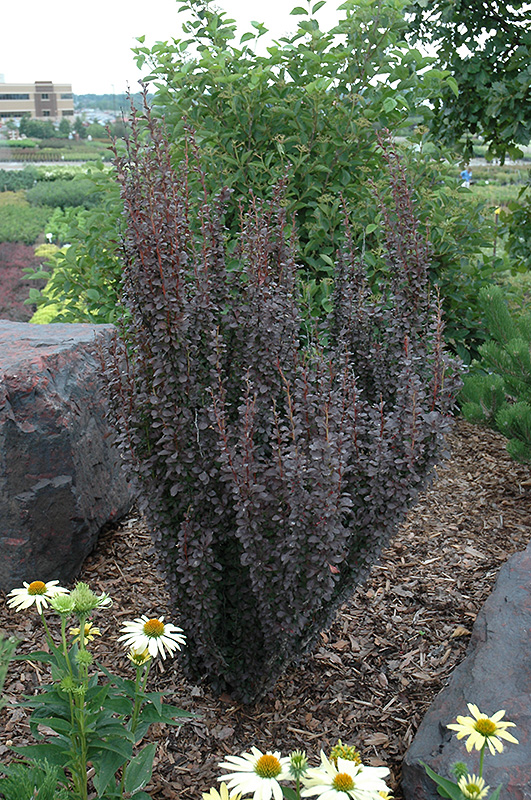>> Home
Helmond Pillar Japanese Barberry
Berberis thunbergii 'Helmond Pillar'
Height: 5 feet
Spread: 24 inches
Sunlight:
![]()
![]()
Hardiness Zone: 4
Description:
One of the most exciting new landscape developments in many years, this shrub combines its rigidly upright, columnar habit with rich purple-red foliage all season long, not to memtion showy flowers and fruit; the ultimate garden accent shrub
Ornamental Features
Helmond Pillar Japanese Barberry is primarily grown for its highly ornamental fruit. The fruits are showy scarlet drupes carried in abundance from early to late fall. It has attractive burgundy deciduous foliage. The small oval leaves are highly ornamental and turn an outstanding red in the fall. It features tiny clusters of yellow flowers hanging below the branches in mid spring.
Landscape Attributes
Helmond Pillar Japanese Barberry is a dense multi-stemmed deciduous shrub with a narrowly upright and columnar growth habit. It lends an extremely fine and delicate texture to the landscape composition which can make it a great accent feature on this basis alone.
This is a relatively low maintenance shrub, and should not require much pruning, except when necessary, such as to remove dieback. Deer don't particularly care for this plant and will usually leave it alone in favor of tastier treats. Gardeners should be aware of the following characteristic(s) that may warrant special consideration;
- Spiny
Helmond Pillar Japanese Barberry is recommended for the following landscape applications;
- Vertical Accent
- Mass Planting
- Hedges/Screening
- General Garden Use
Planting & Growing
Helmond Pillar Japanese Barberry will grow to be about 5 feet tall at maturity, with a spread of 24 inches. It tends to fill out right to the ground and therefore doesn't necessarily require facer plants in front, and is suitable for planting under power lines. It grows at a medium rate, and under ideal conditions can be expected to live for approximately 20 years.
This shrub does best in full sun to partial shade. It is very adaptable to both dry and moist growing conditions, but will not tolerate any standing water. It is considered to be drought-tolerant, and thus makes an ideal choice for xeriscaping or the moisture-conserving landscape. It is not particular as to soil type or pH, and is able to handle environmental salt. It is highly tolerant of urban pollution and will even thrive in inner city environments. This is a selected variety of a species not originally from North America.
